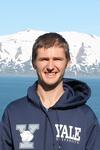Victor Albert
Lindbladians, one of the simplest extensions of Hamiltonian-based quantum mechanics, are used to describe decay and decoherence of a quantum system induced by that system’s environment. Traditionally, an environment is viewed as detrimental to fragile quantum properties. Nevertheless, it offers the ability to drive the system toward exotic phases of matter, which may be difficult to stabilize in nature, or toward protected subspaces, which can be used to store and process quantum information. The latter case (and sometimes the former case) requires the Lindbladian to have more than one steady state. Such Lindbladians, while not generic, are dissipative analogues of Hamiltonian systems with degenerate ground states. However, while Hamiltonians with degenerate ground states have been well-understood for some time, a corresponding treatment of Lindbladians is still underway. This dissertation aims to provide a snapshot of such a general treatment, reviewing Lindbladian extensions of topics commonplace to Hamiltonian systems as well as presenting some new results in this direction.
An important property of Lindbladians is their behavior in the limit of infinite time, and the first part of this work focuses on deriving a formula for the asymptotic projection — the map corresponding to infinite-time Lindbladian evolution. This formula is applied to determine the dependence of a system’s steady state on its initial state, to determine the extent to which decay affects a system’s linear or adiabatic response, and to determine geometrical structures (holonomy, curvature, and metric) associated with adiabatically deformed steady-state subspaces. Using the asymptotic projection to partition the physical system into a subspace free from nonunitary effects and that subspace’s complement (and making a few other minor assumptions), a novel Dyson series is derived to all orders in an arbitrary perturbation. The number of terms in the series which are the same order in the perturbation is shown to be a Catalan number.
In process of the above derivations and in a series of previously published and novel results, we make contact (to various degree) with the following previously studied topics: frustration-free Hamiltonians, dark states, geometric/quantized response, quantum Zeno dynamics, the effective operator formalism, Noether’s theorem, quantum channel simulation, non-Hermitian Hamiltonian systems, and cat codes. In the last few chapters, we apply the developed general techniques to thoroughly investigate the Lindbladian admitting the simplest cat code and introduce new extensions of cat codes to multiple bosonic modes.
Click here for copy of full thesis.
